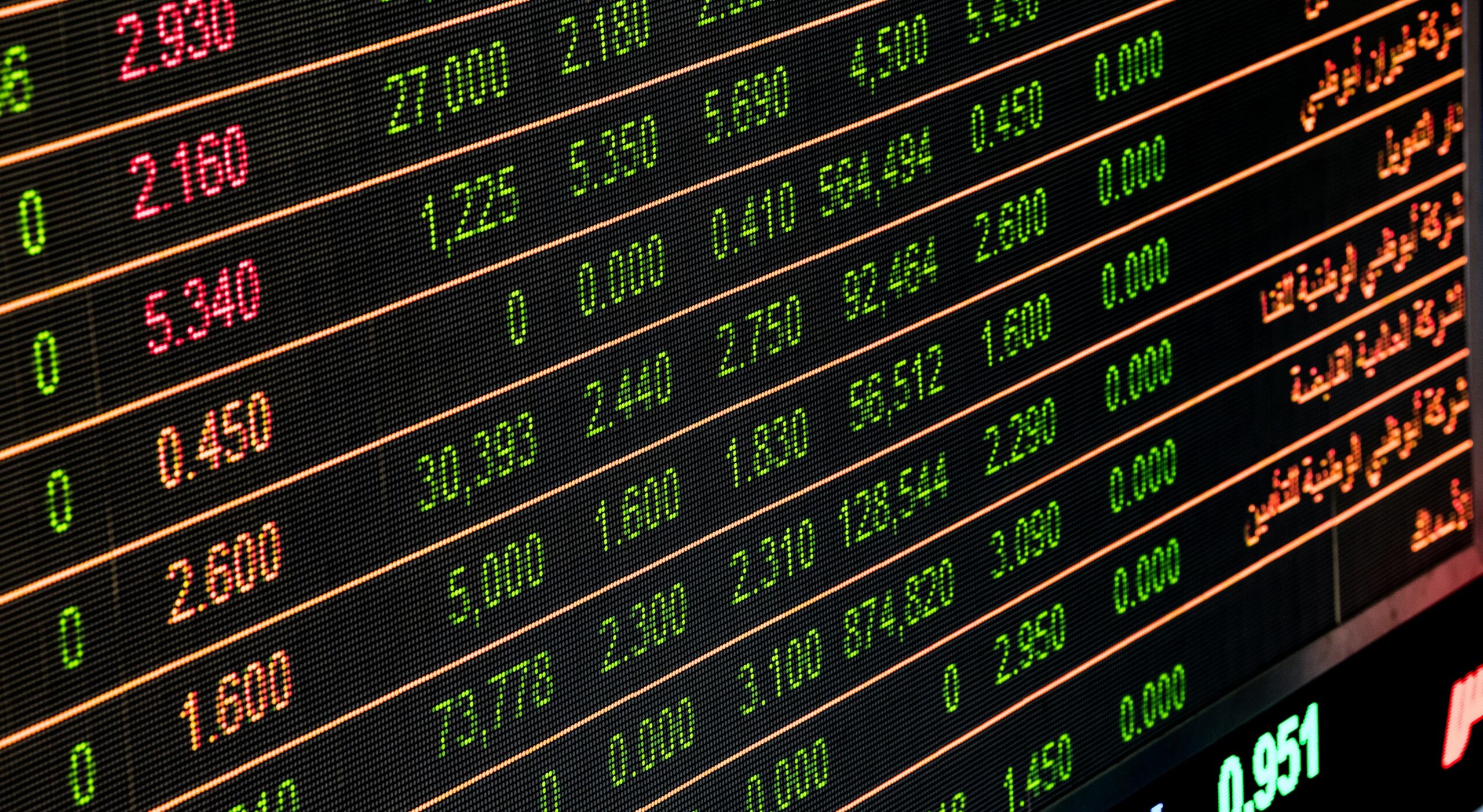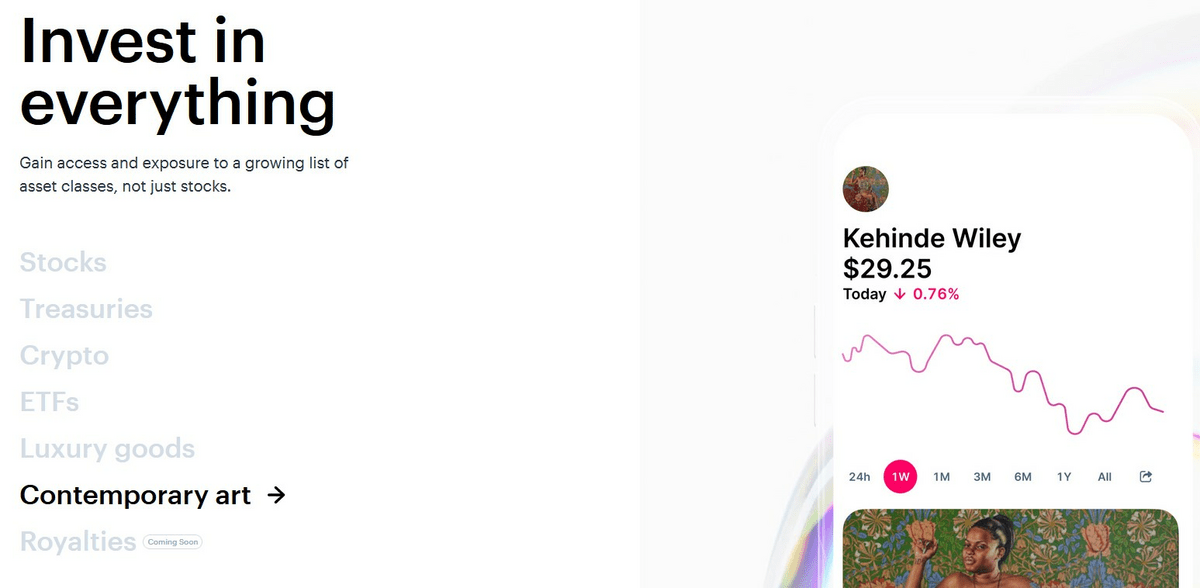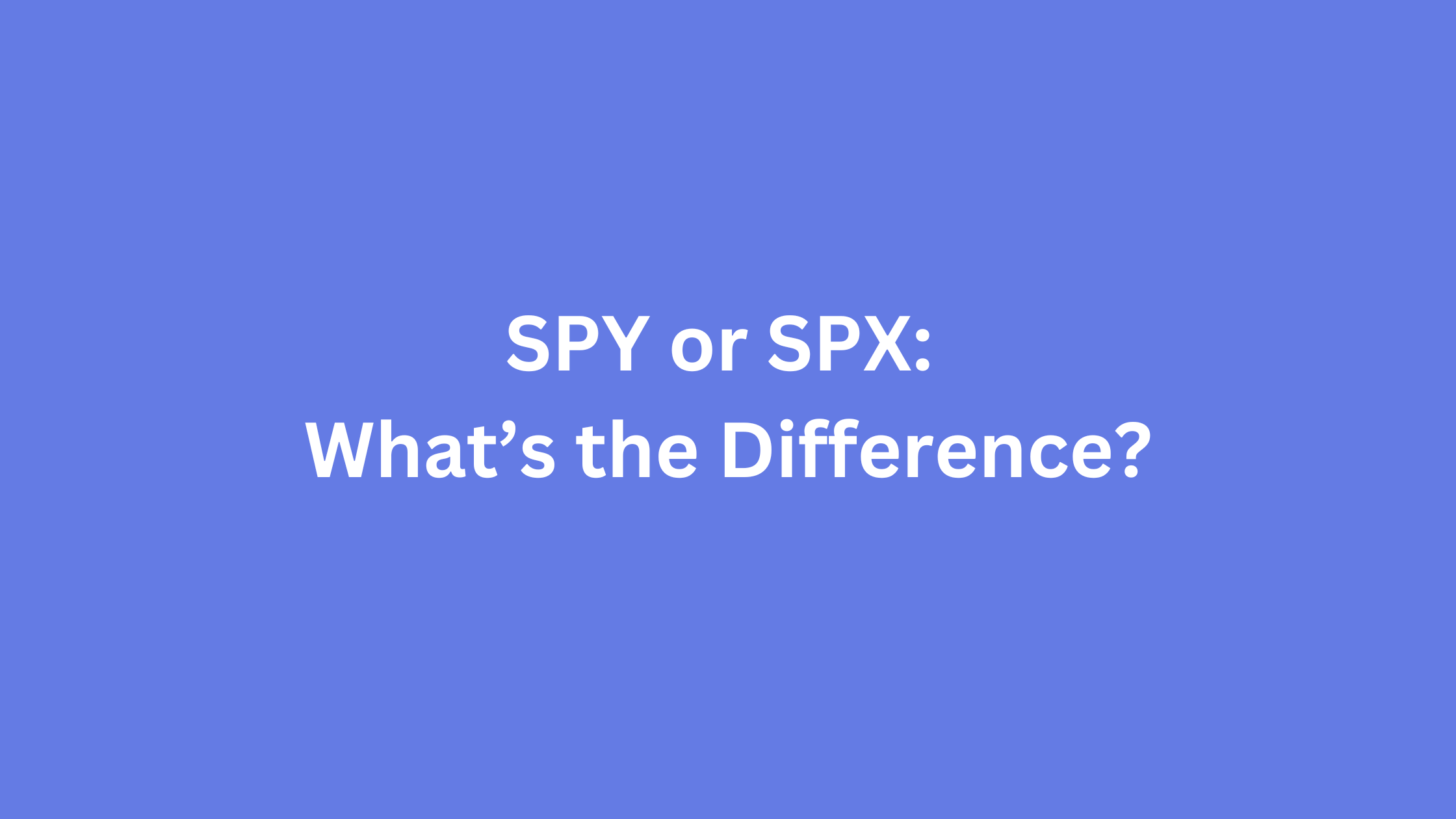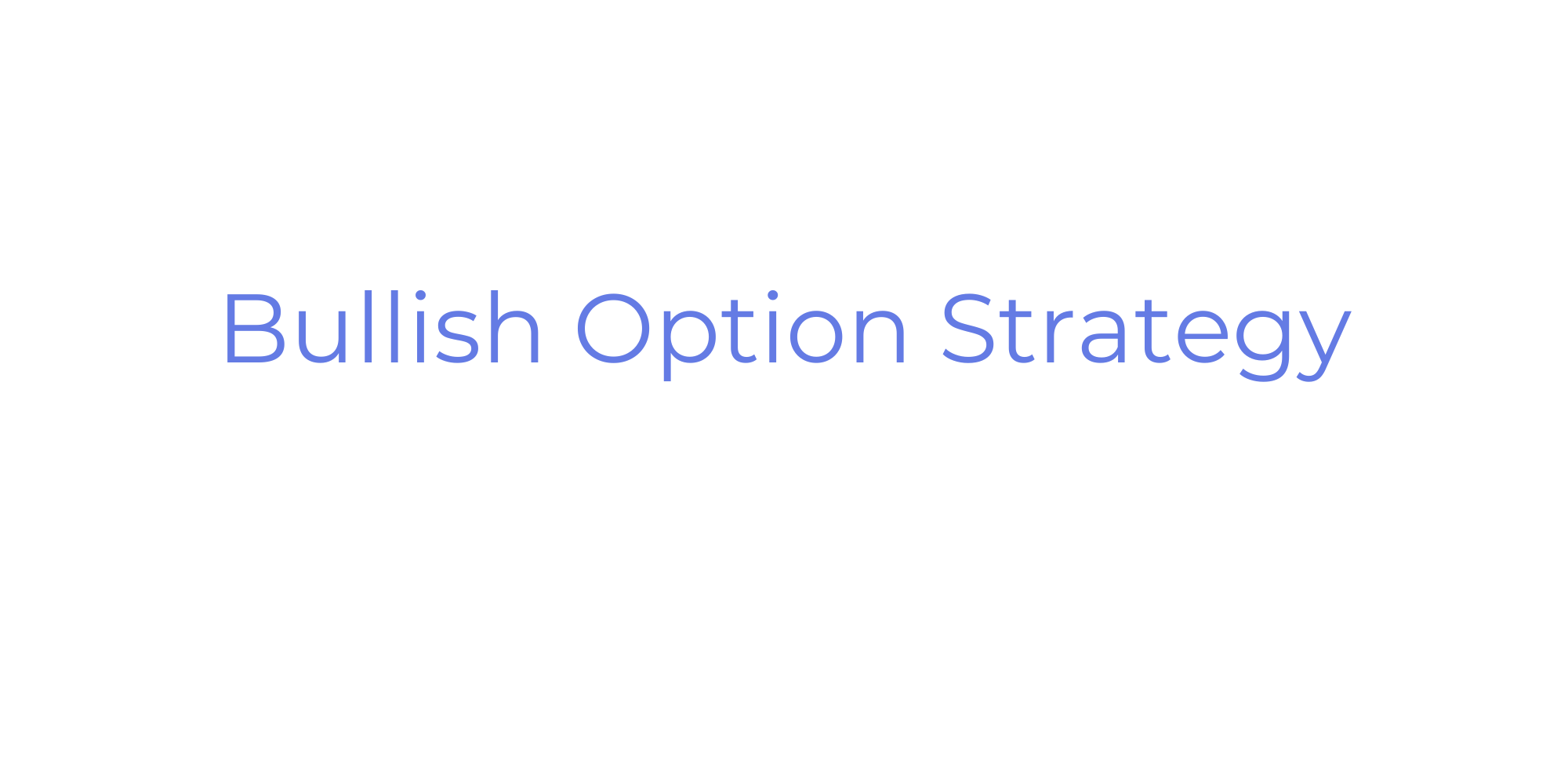There’s more than one way to potentially make money in the stock market. But at the end of the day, people in the market largely fall into two camps: traders and investors.
Wait. They’re not the same thing?
While the terms are sometimes used interchangeably, there is a nuanced but important difference between trading and investing.
So … what is the difference between investing and trading? As you’ll learn in this article, it mostly comes down to two things: mindset and time horizon. Let’s take a closer look at the difference between trading and investing so you can decide which is ultimately right for you.
Whether you identify as a trader, an investor, or both, the right tools and resources can help you work toward your financial goals. Here are some of our top picks:
Brokers + Charts
- Best for traders: eToro* and TradeStation
- Best for investors: M1 Finance
- Best charting for traders and investors: TradingView
Best stock alerts
Education
- Best for traders: Investors Underground
- Best for investors: TD Ameritrade
Best trading computer
eToro securities trading is offered by eToro USA Securities, Inc. (“the BD”), member of FINRA and SIPC. Cryptocurrency is offered by eToro USA LLC (“the MSB”) (NMLS: 1769299) and is not FDIC or SIPC insured. Investing involves risk, and content is provided for educational purposes only, does not imply a recommendation, and is not a guarantee of future performance. https://www.wallstreetzen.com is not an affiliate and may be compensated if you access certain products or services offered by the MSB and/or the BD.
eToro is a multi-asset investment platform. The value of your investments may go up or down. Your capital is at risk.
What is the Difference Between Investing and Trading?
Icing vs. frosting. Cook vs. chef. Investing vs. trading. I can’t help you with the first two, but I can help you with the latter. What is the difference between investing and trading?
Here’s the bottom line:
- Investors tend to have longer time horizons, prioritize fundamental analysis, and have a “buy and hold” approach.
- Traders, on the other hand, tend to have shorter time horizons, rely more on technical analysis, and aim to profit from short-term price fluctuations.
Now, let me explain all of that in a lot more detail.
Investing
The biggest investor vs trader difference is that investors tend to have longer time horizons than traders. They think in terms of years — not on a daily or minute-by-minute basis like day traders.
In the investing world, even a holding period of three to five years might be considered “short-term.”
The world’s greatest investor, Warren Buffett, often holds stocks for multiple decades:
- Buffett has been an investor in Coca-Cola (NYSE: KO) since 1988 (that’s 35+ years).
- In 1951, when Buffett was 20, he invested more than half his net worth in GEICO stock. Then in 1996, Berkshire Hathaway (NYSE: BRK.B) (Buffett’s company) acquired all remaining outstanding Geico shares. Berkshire has owned the entire company outright ever since.
Buffett has stated his ideal holding period is “forever” — and with his initial investment in Geico dating back over 70 years, he clearly puts his money where his mouth is.
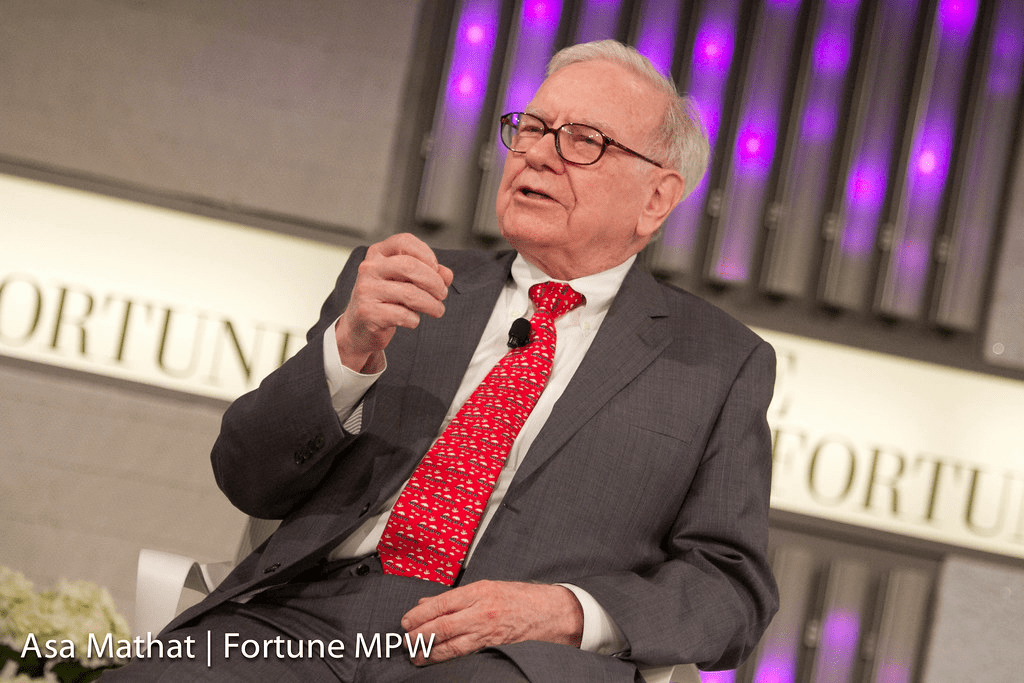
Not all investors are as long-term oriented as Buffett.
But as a general rule of thumb, many of the best investors do fall into the “buy and hold” camp. Most look to buy into a company and hold on for anywhere from three to ten years or longer, only selling if the underlying thesis changes or if they become dissatisfied with management.
Types of Investments
Investing is often associated with the stock market. But there are many assets to invest in.
Here are some of the most common types of investments:
Stocks
Stocks or equities are the most well-known type of investment and trading asset, and represent ownership in a company. They offer potential for long-term growth but also come with risks.
I like to buy stocks with M1 Finance because it’s a discount brokerage with commission-free trading and automated investing. M1 Finance also offers fractional shares and lets you create “pies,” which make it easy to visualize and fine-tune your investment portfolio:
Real Estate
Real estate can provide a steady stream of passive income through rental properties or appreciation of property values. However, it can also be a costly investment and require significant maintenance and management.
Fundrise is a great real estate platform where both accredited and non-accredited investors can invest in real estate without the hassle of buying and managing properties or dropping a huge down payment. Their returns have been impressive so far (they update in real-time; the below was as of November 17, 2023).
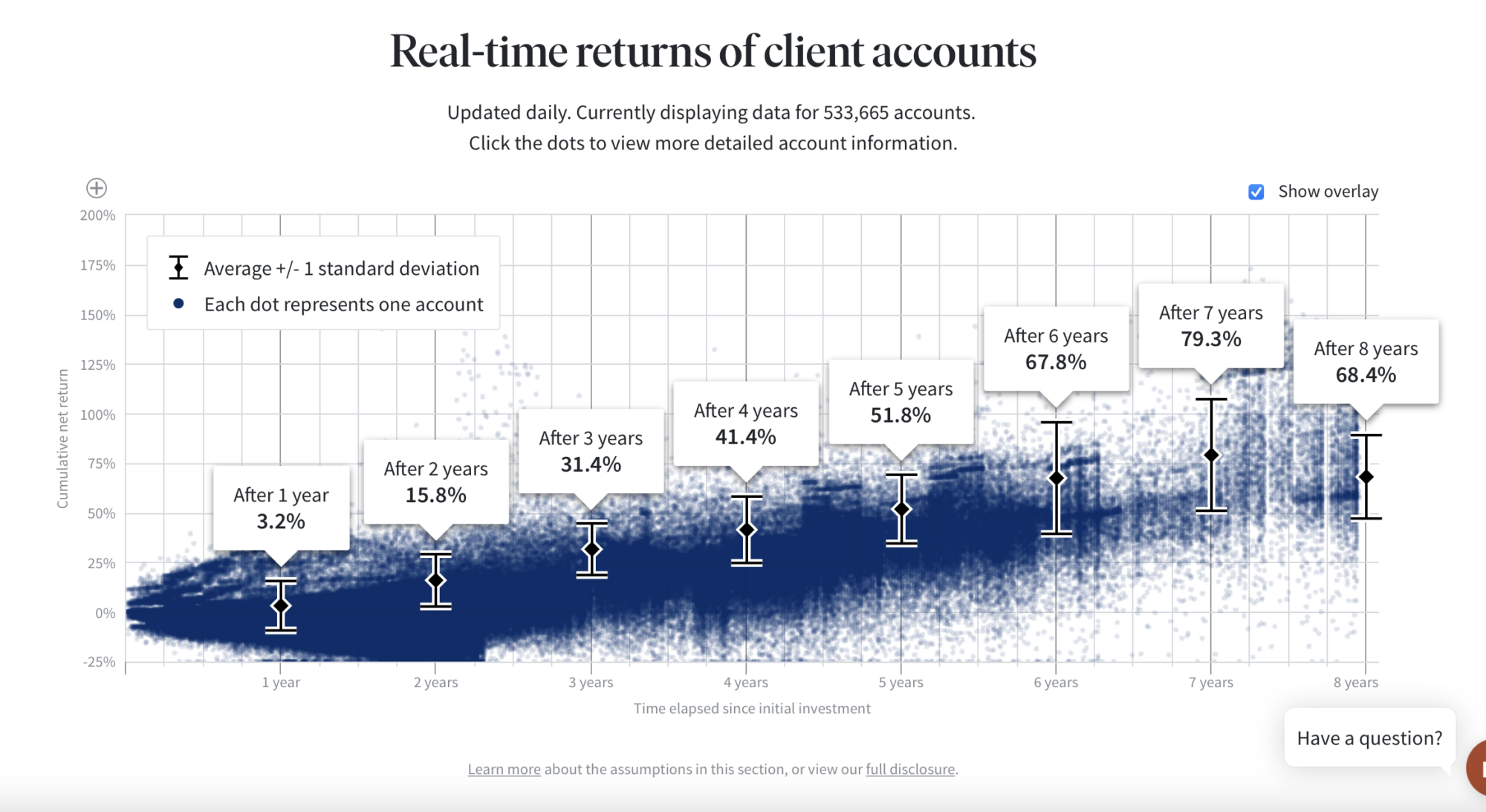
Note: We earn a commission for this endorsement of Fundrise.
Precious Metals
Precious metals like gold and silver are often used as a hedge against inflation and can provide a safe haven for investors during times of economic uncertainty. However, they may not offer significant returns and can be subject to market fluctuations.
If you’re interested in precious metals, check out some of the top precious metals and gold IRA companies:
Crypto
Cryptocurrencies such as Bitcoin and Ethereum are a newer type of investment. They offer potential for high returns but also come with significant risks and volatility.
Note: eToro has value for both investors and traders. If you’re in the latter camp, its CopyTrader feature allows you to follow successful traders and see what they’re doing.
eToro is a multi-asset investment platform. The value of your investments may go up or down. Your capital is at risk.
Alternatives
Alternative investments such as art, collectibles, private equity, and venture capital offer unique opportunities for investors but often require a higher degree of expertise and come with higher fees and risks. You can see my full list of the best alternative investments here.
Public offers unique alternative investments like luxury goods, contemporary arts, royalties, and taxable brokerage accounts.
Pros and Cons of Investing
Pros | Cons |
Long-term growth potential | Risk of loss |
Diversification | Market volatility |
Passive income via dividends | Requires patience |
Inflation protection | Emotional challenges |
Potential tax benefits | |
Don’t have to be glued to your monitor |
Trading
When it comes to trading vs investing, traders tend to have much shorter time horizons than investors. They may think in terms of days, hours, or even minutes.
Mindset is another major difference between trading and investing. Unlike investors, traders don’t necessarily care about owning a piece of a business. They are focused on generating profits from buying and selling assets.
Another difference between trading and investing is that traders often rely more heavily on technical analysis, which involves studying charts, volume, and price movements to identify patterns and make trading decisions.
Many traders rely purely on technicals and don’t care about fundamentals at all. A momentum trader, for instance, might look at the chart of Ferrari (NYSE: RACE), and buy simply because the stock is making new highs and in a clear uptrend:
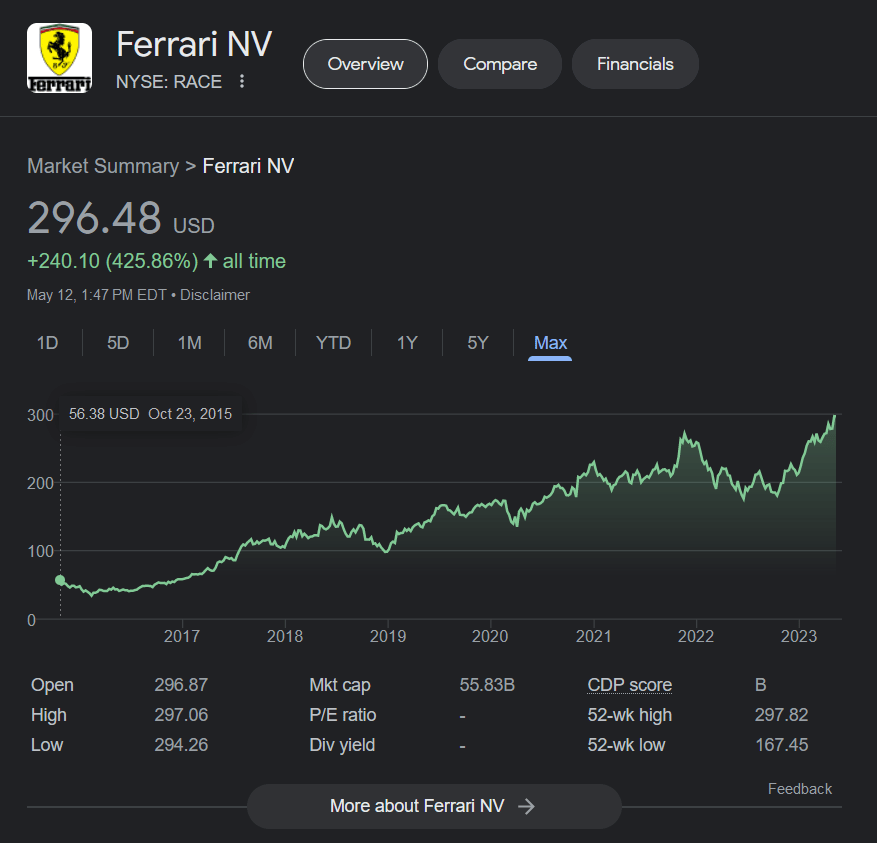
One last difference between trading and investing is risk. Trading offers the potential for high returns but also carries higher risks than investing. Long-term trends like rising global wealth and innovation favor the investor, but anything can happen in the short term, putting traders at risk of greater declines and volatility.
That’s why traders need to be disciplined, have a solid understanding of the markets they trade in, and be able to manage their emotions to avoid making impulsive decisions.
Trading is both an art and a science. The best place to learn the right balance? Investors Underground.
Investors Underground offers one of the most complete trading ecourses out there. It’s led by Nathan Michaud, a world-class trader and educator, who has built an impressive collection of stock trading courses and resources.
As a member, you get access to 1000+ videos, pre-market broadcasts, trade recaps, and IU’s Live Trading Floor. IU also has a Trading Encyclopedia to teach new traders the basics of trading.
Types of Traders
Some traders may specialize in specific markets or asset classes, like forex (foreign exchange), commodities, or options. They may also employ various trading strategies, such as day trading, swing trading, or scalping.
Here’s a closer look at some of the most common types of traders:
Swing Trader
Swing traders tend to hold onto their positions for several days to a few weeks. They aim to profit from short-term price fluctuations by analyzing charts and technical indicators to identify trading opportunities.
Day Trader
Day traders buy and sell securities within the same trading day, often holding positions for just a few minutes or hours. They rely on technical analysis, news events, and market trends to make quick trades and profit from short-term price movements.
Position Trader
Position traders hold positions for longer periods of time, usually weeks or months, and focus on the overall trend of the market. Most still don’t hold quite as long as buy-and-hold traders or investors, though. They often use fundamental analysis and are less concerned with short-term fluctuations in price.
Pros and Cons of Trading
Pros | Cons |
Potential for quick profits | High risk |
Flexibility | Emotions can cloud judgment |
Excitement and challenge | Time commitment |
Access to leverage | Transaction costs and taxes |
Capitalize on short-term trends |
Trading Vs. Investing: Which is Right for You?
Now that you know the difference between investing and trading, how do you decide which one is right for you?
Trading vs investing doesn’t have to be a binary either/or decision. Some people prefer to combine both strategies.
For example, you could leverage a barbell strategy of indexing the vast majority of your money in long-term investments like a total world stock market fund (NYSE: VT) while limiting short-term trading positions to a smaller portion of the portfolio.
That said, here are some helpful rules of thumb to help you choose between investment and trading…
- Trading can work well if you’re comfortable taking on higher risk and prefer a more active approach to managing your portfolio. However, you need to be able to make quick decisions and react to changing market conditions. You may also need to have a higher tolerance for volatility and risk as you’ll typically be seeking short-term gains.
- Investing is best if you’re looking for a long-term approach to building wealth. Investors tend to have a more passive approach to managing their portfolios and may not be as focused on short-term fluctuations in the market. If you tend to have a lower tolerance for risk and are willing to accept lower returns in exchange for more stability and predictability, you may be better off as an investor.
- A combination of trading and investing may be best if you want to have a diversified portfolio of both long-term investments and more active trading strategies. This can help balance out the risks and rewards of each approach and provide more stability over the long term. Trading and investing require different skill sets and strategies, so it’s important to have a clear understanding of both before attempting to combine them.
Final Word:
Now that you understand the difference between investing and trading … Which is right for you?
Regardless of which approach you choose, it’s important to have a solid understanding of the markets you’re investing in or trading in. You should also be disciplined and able to manage your emotions to avoid making impulsive decisions.
- Investing offers the potential for long-term growth, diversification, passive income, and potential tax benefits. However, it also requires patience and due diligence.
- Trading can offer the potential for high returns but carries higher risks and requires a solid understanding of the markets, discipline, and the ability to manage emotions.
Ultimately, the decision between being an investor vs trader comes down to your personal goals, risk tolerance, and time horizon. Whichever approach you choose, it’s important to do your research, have a solid plan in place, and stay disciplined to achieve your financial goals.
FAQs:
Which is better — investing or trading?
Investing and trading serve different purposes, with investing being a long-term strategy focused on building wealth, while trading is more short-term and focused on profiting from market fluctuations.
Which is riskier — trading or investing?
Trading is generally considered riskier than investing, as it involves more frequent buying and selling of securities, which can result in higher transaction costs and greater volatility.
What is the difference between trade and trading?
A trade refers to a specific transaction, while trading refers to the overall activity of buying and selling securities.
Why trading is better than money?
Trading can be better than simply holding onto money because it offers the potential to earn higher returns, but it also carries greater risk and requires knowledge and skill to be successful.
Where to Invest $1,000 Right Now?
Did you know that stocks rated as "Buy" by the Top Analysts in WallStreetZen's database beat the S&P500 by 98.4% last year?
Our April report reveals the 3 "Strong Buy" stocks that market-beating analysts predict will outperform over the next year.
